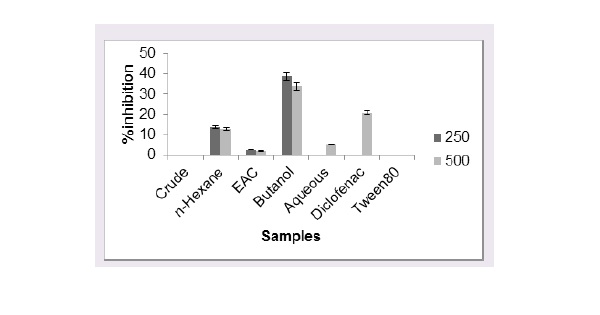The Anti-inflammatory Property of Mitracarpus villosus (Sw.) DC. Extract is Responsible for its use in the Treatment of Ring Worm Infection
DOI:
https://doi.org/10.5530/bems.4.1.4Keywords:
Mitracarpus villosus, Antifungal, Anti-inflammatory, COX, PGE2, ProstaglandinsAbstract
Background: Microbial pathogens continuously mutate in order to survive the activities of new antimicrobials. This is the reason new antimicrobials are easily rendered useless after introduction. Continuous search for new antimicrobial agents is therefore an imperative until a permanent solution is found. Natural products have contributed immensely to the development of new drugs. The extract of Mitracarpus villosus (Sw.) DC., family: Rubiaceae, which is used traditionally for topical treatment of eczema and ring worm infections is a potential source of new antimicrobial compounds. Method: The methanol-methyl chloride extracts of the whole plant and leaves were partitioned into n-hexane, ethyl acetate, n-butanol and aqueous fractions. Both the crude and fractions were tested for antifungal and anti-inflammatory properties. The cytotoxicity property of the leaf extract was also investigated. Results: Results showed that the whole plant extract had no bioactivity. The aqueous fraction also showed no activity while the n-butanol fraction showed considerable anti-inflammatory activity. There was no antifungal activity in both crude and fractions. The leaf extract and fractions also showed no antifungal properties but exhibited strong anti-inflammatory properties. M. villosus is used mainly for the treatment of ring worm which is a fungal infection. Conclusion: Based on the absence of in vitro antifungal properties in the entire specimen tested, we propose that the effectiveness of the herb as an anti-fungal agent is derived from its antiinflammatory property.

Downloads
Published
Versions
- 2018-01-01 (3)
- 2018-01-01 (2)
- 2018-01-01 (1)









